
The Profound Sadness That Comes with Physiological Trauma
The Silent Weight of Sadness: Understanding the Emotional Depth of Unresolved Psychological Trauma
Primary Category: Psychology
Author:
• Tim McGuinness, Ph.D., DFin, MCPO, MAnth – Anthropologist, Scientist, Polymath, Director of the Society of Citizens Against Relationship Scams Inc.
Author Biographies Below
About This Article
Unresolved psychological trauma often settles into a quiet, persistent sadness that reshapes how you see yourself, others, and the world. It is not the clean arc of grief or only a clinical depression; it is a layered state fueled by nervous-system alarm, unfinished meaning-making, and injured trust. This sadness can appear as emptiness, fatigue, or withdrawal; as shame that attacks worth; as attachment withdrawal after a deceptive bond ends; or as moral injury when core values are violated. Triggers are cues that spike the body’s alarm, while sadness is the emotion about what was lost; both can co-occur and must be cared for in order, safety first. Helpful responses are steady and practical: name what you feel, ground the body, use brief skills like paced breathing and five-sense orientation, seek dignifying support, and keep boundaries with minimizing people and “rescuers.” Healing is paced, collaborative, and culturally aware. You honor the pain, integrate it into your story, and rebuild meaning through small, repeatable acts that restore agency, connection, and self-respect.
Note: This article is intended for informational purposes and does not replace professional medical advice. If you are experiencing distress, please consult a qualified mental health professional.

The Silent Weight of Sadness: Understanding the Emotional Depth of Unresolved Psychological Trauma
Introduction to a Hidden Emotion
You may have encountered sadness in many forms throughout your life. It can be fleeting, like the melancholy that follows a rainy afternoon, or sharp, like the sting of disappointment. Yet there exists a deeper, more persistent sadness, one that does not arise from a single event or loss, but from the lingering presence of unresolved psychological trauma.
This sadness is not grief. It is not depression in its clinical sense. It is a quiet, enduring emotional state that can shape your perception of the world, your relationships, and your sense of self.
This form of sadness is often misunderstood, overlooked, or misdiagnosed. It does not announce itself with tears or dramatic expressions. Instead, it settles into the corners of your life, coloring your thoughts and emotions with a subtle but powerful hue. It is the sadness of what was never spoken, never processed, never healed.
The Nature of Trauma-Induced Sadness
When trauma remains unresolved, it does not simply fade away. It becomes a “part” of your mind. It embeds itself in your emotional memory, influencing how you respond to stress, how you connect with others, and how you interpret your own worth. The sadness that emerges from this unresolved pain is not reactive; it is foundational. It becomes part of your emotional architecture.
This sadness may manifest as a sense of emptiness, a lack of joy, or a persistent feeling that something is missing. You might find yourself withdrawing from others, not because you do not care, but because the effort to engage feels overwhelming. You may experience fatigue that is not physical, but emotional, a weariness that comes from carrying a burden that has no name.
Unlike grief, which is tied to a specific loss and often follows a recognizable trajectory, trauma-induced sadness is diffuse. It does not have a clear beginning or end. It may arise from childhood experiences, abusive relationships, or events that shattered your sense of safety, such as a trust-based relationship scam. It is not about mourning what was lost, but about living with what remains, unresolved.
within the framework of psychological parts theory, often associated with Internal Family Systems (IFS) and similar models, the persistent sadness you are exploring can indeed be understood as a sad part. This concept refers to a distinct sub-personality or internal aspect of the self that holds specific emotions, memories, and beliefs, often shaped by past experiences.
Understanding the ‘Sad Part’ in Parts Theory
In parts theory, your mind is viewed as a system of internal “parts,” each with its own role, perspective, and emotional tone. These parts are not pathological; they are adaptive responses to life experiences. A ‘sad part’ typically emerges in response to unresolved trauma, emotional neglect, or chronic invalidation. It carries the burden of sadness that was never acknowledged or processed.
This part may:
- Hold memories of abandonment, betrayal, or loss.
- Express itself through withdrawal, hopelessness, or emotional numbness.
- Seek protection by staying hidden, especially if sadness was punished or ignored in your past.
You might notice this part surfacing during quiet moments, in relationships, or when triggered by reminders of past pain. It may feel young, vulnerable, or stuck in time. Importantly, it is not the whole of you; it is a part that needs compassion, curiosity, and connection.
Working with the Sad Part: In therapeutic contexts, especially within IFS, you are encouraged to build a relationship with this part. You do not try to eliminate it. Instead, you listen to it, understand its story, and help it release the burdens it carries. This process can lead to profound healing, as the sadness transforms from a silent weight into a source of emotional wisdom.
Forms of Sadness Beyond Grief
Sadness from trauma can take many forms, each with its own emotional texture and psychological implications.
A list of the main applicable types of sadness that affect scam victims:
-
- Existential Sadness
- Repressed Sadness
- Empathic Sadness
- Depressive Sadness
- Ambiguous-Loss Sadness
- Disenfranchised Sadness
- Attachment-Withdrawal Sadness
- Shame-Laden Sadness
- Moral-Injury Sadness
- Traumatic-Grief Sadness
- Existential Sadness
You might experience existential sadness, a deep contemplation of life’s meaning and your place within it. This form of sadness often emerges when trauma disrupts your sense of identity or purpose.
Existential sadness is the heavy, panoramic grief that shows up when trauma shakes your basic sense of meaning, safety, and belonging. It is not only about what happened, it is about what the event seems to say about life itself. After unprocessed trauma, the mind often tries to rebuild a worldview that feels cracked. Questions surface about trust, fairness, purpose, and the point of trying. You may feel detached from activities that once mattered, not because you are lazy or indifferent, but because the scaffolding that made those activities feel worthwhile is uncertain. This sadness feels wide and deep at the same time. It can sit behind the eyes during quiet moments and flood you late at night when distractions fade.
Common signs include a persistent sense that life is smaller or dimmer, difficulty imagining a future that feels inviting, and a pull toward big questions that seem impossible to answer. People sometimes call it emptiness, yet it is often a full body weight that slows plans and blurs motivation. Unprocessed trauma feeds this by leaving core assumptions unexamined and unhealed. The nervous system stays alert, and the soul of the story stays stuck.
Helpful steps are simple and steady. Name the questions without forcing answers. Reconnect with values through small acts that reflect who you want to be. Practice grounding that anchors the body while you explore meaning with a counselor or trusted guide. Purpose returns through lived experiences of safety, choice, and contribution. It is built, not declared.
Repressed Sadness
There is also repressed sadness, which hides beneath anger, irritability, or emotional numbness. In some cases, cultural or familial norms discourage emotional expression, leading you to suppress your sadness until it becomes unrecognizable.
Repressed sadness is the feeling that does not get to speak. After trauma, many people learn to function by pushing grief underground. This can be a survival skill early on, especially when life demands continue, yet over time, the cost grows. Repressed sadness does not vanish. It changes shape. It can show up as irritability, numbness, headaches, muscle tension, stomach trouble, or trouble sleeping. It can appear as overworking, constant caretaking of others, or a schedule packed so tightly that there is no space to feel anything.
The mind often helps the repression through stories like “I am fine,” it was not that bad, or others have it worse. These statements protect against overwhelm, but they also block movement. Unprocessed trauma keeps the body on guard, and the sadness that would help metabolize the loss remains locked. When the dam finally cracks, people are surprised by sudden crying, sharp loneliness, or waves of fatigue that feel out of proportion to the moment. Nothing is wrong with you. Your system is sending delayed mail.
Gentle release is the goal. That starts with noticing where sadness lives in the body, often in the throat, chest, or belly. Short, predictable practices help. Two minutes of paced breathing, a daily check-in with three words for your current state, and brief journaling that names one loss and one kindness. Give sadness lawful room in therapy or in a trauma-informed group where validation and boundaries are clear. When sadness can be felt in doses that match your window of tolerance, it stops running your life from the basement.
Empathic Sadness
Empathic sadness may arise when you witness others’ suffering, especially if their pain mirrors your own. This form of sadness is common among trauma survivors who have developed heightened sensitivity to emotional cues. This can develop as a result of providing support to other victims.
Empathic sadness is the sorrow you carry because you are tuned to others. Many trauma survivors are highly sensitive to the pain around them. They read rooms and absorb distress, which once served as protection. In the present, that sensitivity can become a burden. You may find yourself devastated by news stories, overwhelmed by a friend’s crisis, or unable to separate your day from what others feel. Unprocessed trauma often sharpens this pattern. The nervous system scans for threat through other people, and caring becomes a way to manage your own anxiety. You might try to fix, soothe, or carry others to avoid feeling helpless about your own history.
Signs include emotional exhaustion after conversations, difficulty saying no, guilt when you set limits, and a tendency to prioritize others’ needs over your own basic care. Over time, empathic sadness can slide into resentment, burnout, or a quiet belief that your needs do not count. The aim is not to become less compassionate. The aim is to add boundaries so your compassion becomes sustainable.
Start by noticing ownership in language. Practice sentences like I care about what you are going through, and I also need to pause, or I can listen for ten minutes, then I have to take a break. Build small rituals that discharge what you pick up, such as a short walk after heavy talks, shaking out the hands, or placing one hand on your chest and one on your belly to reset breath. Learn the difference between witnessing and rescuing. You help best when your nervous system is steady and your empathy includes yourself.
Depressive Sadness
Depressive sadness, while overlapping with clinical depression, is often rooted in unresolved trauma. It is persistent and debilitating, affecting your ability to function and engage with life. Unlike situational sadness, it does not respond easily to external changes or positive experiences.
Depressive sadness is the sustained, flattening low that follows trauma when the system never gets a full reset. It blends emotional pain with biological shifts. Sleep patterns change, either too little or too much. Appetite shifts up or down. Pleasure dulls. Motivation shrinks. Thoughts slow and tilt toward self-blame or hopeless predictions. Unlike ordinary sorrow that comes in waves tied to memories, depressive sadness can feel like a gray filter over everything. It often pairs with cognitive symptoms, trouble concentrating, indecision, and a harsh inner critic that insists nothing will help.
Unprocessed trauma feeds this state through ongoing hyperarousal or collapse. The body spends energy bracing or shut down, which leaves less capacity for curiosity, connection, and effort. People often try to push through with willpower, then feel worse when that fails. This is not about character. It is about a nervous system and mood network that needs support.
Relief usually requires a layered approach. Stabilize the body with predictable sleep routines, gentle movement, sunlight, and regular meals. Add micro commitments that are small enough to complete, such as one chore or one five-minute task, then acknowledge the win. Bring in structured support, therapy that includes behavioral activation or trauma-focused methods, and consider medical evaluation to rule out conditions that mimic depression or to discuss medication when appropriate. Reduce isolation by scheduling brief, low-pressure contact with safe people. Depressive sadness loosens when the body experiences safety, the mind has tools to interrupt loops, and the day includes tiny successes that stack. Recovery is not instant. It is a practice measured in steady inches, not leaps.
Ambiguous-Loss Sadness
This is the ache that comes from a loss you cannot fully confirm or complete. In a relationship scam, the person you attached to never existed in the way you believed. There is no clear goodbye, no funeral, no shared circle to say what was lost. Your mind loops the same questions. “Was any of it real.” “Did I miss a sign.” “Should I wait for an explanation?” That uncertainty keeps grief open. Sleep fractures. Rumination crowds out ordinary tasks. You replay chat threads and photos because the story has no endpoint. What helps is naming the loss clearly. You can say, “I am grieving a relationship I experienced that was built on deception.” Give your grief a container with simple rituals. Write a letter you will not send. Archive the chat. Hold a small closing moment with a trusted person. Replace checking behaviors with scheduled, brief times to process, then return to structure. Limit searching and platform scrolling that restarts the loop. Ambiguous loss does not resolve through more information. It softens when you give the loss a recognized place in your life and turn gently toward routines, skills practice, and safe connection.
Disenfranchised Sadness
This is sorrow that is not recognized by others. You say you were scammed and hear, “It was just online,” or “Why didn’t you know?” Friends minimize. Family lectures. Systems dismiss. Your grief is real, but the room refuses to hold it. The result is a second injury. Shame grows. You withdraw. You stop asking for help because asking seems to invite blame. This pattern is common after cybercrimes and impersonation fraud. The remedy begins with validation from the right places. Seek trauma-informed support groups that understand romance and investment scams. Practice short boundary lines with minimizing people. “I am not looking for advice. I need you to say you believe me.” Share only with those who can meet that request. Use accurate language to counter erasure. “I was targeted and groomed by criminals. I am grieving the loss and the betrayal.” Document the crime privately so you can see your own reality on paper when others doubt it. If you decide to educate someone, keep it brief and optional. Your worth is not on trial. Disenfranchised grief heals in spaces that witness it, not in debates about whether it counts.
Attachment-Withdrawal Sadness
Your sadness is also a nervous system withdrawal. Daily good mornings, good nights, and check-ins created a rhythm. Your body learned to expect the ping of connection and released chemistry that felt like safety and reward. When the contact stops, you feel empty, restless, and low. You may stare at the phone, reread threads, or feel a pull to send a final message. This is not weakness. It is a predictable crash after an attachment is cut, even when the attachment was manufactured by a scammer. Treat it like a breakup your body has to recover from. Reduce cues that spike craving. Mute apps, archive threads, remove photos. Replace the morning and evening rituals with something you can control. A five-minute walk, paced breathing, a short check-in with a safe person, or a simple routine like tea and journaling. Expect waves. Use urge-surfing skills to wait them out for ten minutes at a time. Schedule social contact that is low effort and kind. Over time the craving fades and sadness becomes less jagged. When you feel the pull to reach back, name it aloud. “This is withdrawal. I will take care of my body and not reopen the wound.”
Shame-Laden Sadness
Here, sadness carries a running self-attack. You hurt, and the hurt is laced with sentences like, “I should have known,” “I am ridiculous,” or “No one will respect me now.” Shame narrows your posture and your options. You avoid eye contact. You hide evidence. You rewrite history to make yourself the cause of a crime someone else engineered. Shame-laden sadness keeps you isolated, which blocks the inputs that would help you recover. The first shift is language. Move responsibility to the right place. “A criminal groomed me. My reactions make sense. My decisions were shaped by manipulation.” Speak that aloud to yourself and to one trusted person. Practice small dignity actions. Shower, clean a surface, eat something steady, take a walk. Shame loosens when you reconnect with care for your body. Replace global judgments with specific learning. “Next time I will not talk to strangers online and send money to someone I have not met. I can learn skills and set boundaries.” If shame is heavy, consider therapy that targets self-criticism and trauma. Keep company with people who treat your experience with respect. Shame fades in accurate light. Your sadness is valid, and your worth is intact.
Moral-Injury Sadness
Moral injury appears when a core value is violated in a way that shakes your sense of right and trust. You believed in service, honesty, or mutual care. The scam exploited exactly those values. If a criminal wore a uniform or spoke about duty, the damage can feel spiritual as well as emotional. You may feel bitterness, cynicism, or a hollowing out of meaning. You might ask, “What do I believe now?” or “How can I trust my judgment or any institution?” This is not simple disappointment. It is sorrow anchored in a cracked moral map. Repair begins with naming the value that was harmed and bringing it back on your terms. If you value honesty, practice small acts of honest communication with safe people. If you value service, choose structured, time-limited ways to help that do not drain you. Avoid reactive crusades that keep you angry and exhausted. Write a brief personal statement about what you still stand for. Keep it visible. Limit media that inflames contempt. Seek communities that model integrity and boundaries. Moral injury heals when action realigns with values in small, repeatable steps. Meaning returns through practice, not argument.
Traumatic-Grief Sadness
Here, grief and threat are fused. Memories of the relationship do not only bring loss. They also trigger the body’s alarm. You may have intrusive images, startle at sounds, avoid places or apps, and feel waves of fear with sorrow. Sleep is light. Concentration slips. Your system is trying to both mourn and stay safe. Pushing yourself to “move on” usually backfires because the body is not convinced it is safe yet. Care starts with stabilization. Learn simple grounding skills and practice them many times a day. Five-sense check-ins. Slow exhale breathing. Orienting to the room by naming what you see. Reduce exposure to cues that flood your system while you build capacity. Save processing for a steady window with support, not late at night alone. Consider trauma-informed therapy that uses structured methods to separate the fear response from the grief and to restore a sense of agency. In group spaces, choose formats that teach skills, not just storytelling. As the alarm quiets, grief can move in waves that feel painful but survivable. Traumatic grief eases when safety, skill, and support return, and when you allow yourself to mourn at a pace your body can hold.
Each of these forms reflects a different facet of the trauma experience. Some are adaptive, helping you cope with overwhelming emotions. Others are pathological, requiring therapeutic intervention. Recognizing these forms is the first step toward understanding the complexity of trauma-induced sadness.
Other Related Forms of Sadness
- Anticipatory sadness: A heavy drop that arrives before hard moments, telling family, filing reports, reviewing evidence, because the mind rehearses pain and rejection in advance.
- Guilt-driven sadness: Grief dominated by “I harmed others” (shared finances, family fallout); often pairs with rumination and compulsive “repair” attempts.
- Anniversary/triggered sadness: Time-stamped dips around dates, seasons, or sensory cues (songs, apps, uniforms) that reactivate the body’s memory of the loss.
- Lonely/withdrawal sadness: Social retreat that follows exposure and shame; the person avoids community, which removes the very inputs that would ease the load.
- Burnout/compassion-fatigue sadness: Common in caregivers, advocates, and family, emotional depletion from sustained support without equal restoration.
- Collective sadness: A broad, aching sorrow stirred by news cycles, community harms, or waves of similar scams amplifies personal grief.
- Nostalgic/bittersweet sadness: A tender, nonpathological ache for what was hoped for; can be harnessed to reconnect with values and meaning.
- Adjustment-related sadness: A situational low tied to practical disruption (housing, work, legal tasks); improves as structure, routine, and solvable steps return.
- Somatized sadness: The body carries it, chest tightness, headaches, fatigue, stomach upset, when words are scarce or feelings feel unsafe to express.
Cultural Interpretations of Deep Sadness
Sadness is a universal emotion, but its expression and interpretation vary widely across cultures.
- In Japanese culture, the concept of “aware” (哀れ) captures a bittersweet melancholy tied to the impermanence of life. It is a sadness that acknowledges beauty and loss simultaneously.
- In Portuguese, the word “saudade” describes a profound emotional state of longing and sadness for something lost or unattainable. It is not just about missing someone or something; it is about the emotional depth of that absence.
- The Czech term “lítost” refers to a sorrowful regret mixed with existential pain. It is a sadness that arises from recognizing one’s limitations or failures, often in the context of trauma.
- Indigenous traditions often approach sadness communally. Rituals, storytelling, and shared ceremonies provide a space for processing collective trauma and emotional pain. In these cultures, sadness is not a private burden but a shared experience that can be healed through connection.
- Eastern cultures tend to manage sadness with restraint, emphasizing harmony and emotional balance. Western cultures, by contrast, often encourage emotional expression and therapeutic exploration. These cultural differences influence how you understand and respond to your own sadness.
What Does It Mean to Have Unprocessed Trauma?
To have ‘unprocessed trauma’ means that an emotionally distressing experience has not been fully acknowledged, understood, or integrated into your psychological and emotional framework. This kind of trauma remains active beneath the surface of your awareness, influencing your thoughts, behaviors, and emotional responses in ways that may feel confusing or disproportionate.
What Unprocessed Trauma Involves
When trauma is unprocessed, it typically means that:
-
- You have not had the opportunity or support to talk about or reflect on the experience safely and completely.
- Your nervous system has not returned to a regulated state after the traumatic event.
- The emotions tied to the trauma, such as fear, shame, guilt, or sadness, remain unresolved.
- You may avoid thinking about the trauma or suppress related feelings, often unconsciously.
- The trauma continues to shape your reactions, especially in situations that resemble the original event.
This can result in emotional patterns such as chronic sadness, anxiety, irritability, or emotional numbness. You might find yourself reacting strongly to minor stressors, struggling with relationships, or feeling disconnected from your own identity.
How It Affects You
Unprocessed trauma can manifest in several ways:
-
- Intrusive thoughts or flashbacks that bring the trauma back into your awareness.
- Avoidance behaviors that keep you from situations, people, or emotions that remind you of the trauma.
- Hypervigilance or a constant sense of danger, even in safe environments.
- Somatic symptoms such as chronic pain, fatigue, or digestive issues.
- Emotional dysregulation, where your feelings seem overwhelming or difficult to control.
These symptoms are not signs of weakness. They are your mind and body’s way of trying to protect you from pain that has not yet been resolved.
Why It Remains Unprocessed
Trauma often remains unprocessed because:
-
- The experience was too overwhelming to face at the time.
- You lacked emotional support or validation from others.
- Cultural or familial norms discouraged emotional expression.
- You developed coping mechanisms that helped you survive but now prevent healing.
In many cases, the trauma occurred during childhood or in environments where you had little control (such as because of a psychologically manipulative scam or fraud). The emotional part of you that experienced the trauma may still be stuck in that moment, waiting for resolution.
Pathways to Processing Trauma
Processing trauma involves:
-
- Acknowledging the experience without judgment.
- Feeling the emotions associated with it in a safe and supported way.
- Understanding how it has affected you, both emotionally and behaviorally.
- Integrating the experience into your life story so it no longer holds power over you.
Therapeutic approaches such as EMDR, somatic experiencing, and Internal Family Systems (IFS) are designed to help you process trauma gently and effectively. These methods allow you to connect with the parts of yourself that carry the trauma, including the sad part, and help them release the burdens they hold.
The SCARS Institute provides educational resources and support for individuals working through trauma, including tools for understanding emotional responses and building resilience. Begin by visiting www.ScamVictimsSupport.org, and when you are ready to join a support group, sign up at support.AgainstScams.org
The Emotional Landscape of Unprocessed Trauma
Unprocessed trauma creates a psychological environment where sadness becomes a constant companion. You may experience hypervigilance, always on alert for danger, even when none is present. This state of heightened awareness can be exhausting and isolating.
Emotional dysregulation is another common consequence. You might find it difficult to control your emotions, swinging between numbness and overwhelm. This instability can make relationships challenging and self-care elusive.
Dissociation often masks deeper sorrow. You may feel disconnected from your body, your emotions, or your surroundings. This detachment is a protective mechanism, but it also prevents you from fully experiencing and processing your sadness.
Avoidance behaviors, such as substance use, compulsive work, or emotional withdrawal, serve as defenses against overwhelming sadness. These behaviors may offer temporary relief, but they ultimately reinforce the trauma and deepen the emotional pain.
This sadness is not just emotional. It is somatic, affecting your physical health. It is spiritual, challenging your beliefs and sense of meaning. It is relational, influencing how you connect with others and how you perceive their intentions.
Triggers vs. Sadness
What are they?
-
- A trigger is a cue. It is something outside or inside you that suddenly activates a memory network and a body alarm. The cue can be a sound, image, date, smell, message, or thought. The reaction is fast and often disproportionate to the present moment because your nervous system is responding as if the past event is happening again. Triggers commonly bring spikes of fear, shame, panic, anger, or numbness, plus body changes like a racing heart, a tight chest, tunnel vision, or dissociation.
- Sadness is an emotion. It is a natural, adaptive feeling that arises when you register loss, disappointment, or hurt. Sadness can be intense, but it usually comes with heaviness, slowed energy, tears, and a pull to reflect or seek comfort. It is about the meaning of what happened, not about immediate danger.
How they interact
-
- A trigger can produce sadness, but it often brings other states first, like fear or shame.
- Sadness can appear without any trigger, for example, on an anniversary or while recalling what you lost, and it does not necessarily set off the body’s alarm.
What they feel like in the body
-
- Triggered: sudden jolt, adrenaline, breath gets shallow, mind narrows, you feel compelled to escape, argue, or shut down.
- Sad: heaviness, slower breath, urge to cry or withdraw, more reflective thinking.
Time course and control
-
- Triggered: rapid onset, short bursts or waves that can loop; best handled with immediate stabilization skills.
- Sad: slower onset, can last minutes to days; best handled with supportive expression and paced processing.
Quick care plan
-
- If triggered: name it, “This is a trigger, not danger.” Ground with five-senses noticing, slow exhales, feet on the floor, look around the room, and label safe objects, take a brief walk, and reduce exposure to the cue.
- If sad: allow and name it, “I am sad because…” Seek kind contact, journal for ten minutes, play steadying music, take a warm shower, plan one small nourishing action.
When both show up together
Start with safety first: regulate the body until the alarm quiets, then make room for the sadness underneath. If reactions are frequent, intense, or include thoughts of self-harm, reach out to a trauma-informed counselor or a crisis service right away.
Healing and Integration: A Cultural and Psychological Challenge
Healing the sadness of unresolved trauma requires a multifaceted approach. You must consider not only psychological interventions but also cultural and spiritual dimensions. What works for one person may not work for another, especially when cultural norms shape emotional expression.
- Culturally sensitive therapies recognize these differences. They adapt techniques to align with your values, beliefs, and emotional language. This approach can build trust and enhances the effectiveness of treatment.
- Holistic therapies, such as EMDR (Eye Movement Desensitization and Reprocessing), somatic experiencing, and expressive arts, address the body, mind, and spirit. These methods help you process trauma in ways that traditional talk therapy may not.
- Grief literacy is another important tool. It involves educating yourself and others about the nature of trauma-induced sadness, normalizing conversations around emotional pain, and creating spaces for healing.
In many cultures, healing is not about moving on. It is about reintegrating the experience into your life narrative. This process involves acknowledging the sadness, understanding its origins, and finding meaning in the journey.
Conclusion
The sadness of unresolved trauma is profound, complex, and deeply human. It is not a flaw or a weakness. It is a response to pain that was never given the space to heal. By understanding its emotional depth and cultural expressions, you can begin to witness this sadness, not as something to be fixed, but as something to be honored.
You do not need to carry this weight alone. Through awareness, compassion, and culturally informed healing, you can begin to transform this sadness into a source of strength and insight. The journey may be long, but it is one worth taking.
Glossary
- Ambiguous-loss sadness — sorrow tied to losses that lack clear endings or confirmation, which keeps grief looping and unsettled.
- Anniversary/triggered sadness — time-stamped dips around dates or cues that reactivate memory and mood even when you feel safe now.
- Anticipatory sadness — a heavy drop that arrives before hard tasks or conversations as the mind rehearses pain in advance.
- Attachment-withdrawal sadness — low mood and craving after a bond ends, driven by missing daily contact and routine regulation.
- Burnout/compassion-fatigue sadness — depletion from sustained caring without restoration, common in caregivers and advocates.
- Collective sadness — broad sorrow stirred by community harms or waves of similar scams that amplify private grief.
- Depressive sadness — persistent, flattening low mood with slowed energy and diminished pleasure that often follows trauma.
- Disenfranchised sadness — grief minimized or dismissed by others, creating a second injury and increased isolation.
- Dissociation — protective detachment from body, emotion, or surroundings that muffles pain but blocks processing.
- Empathic sadness — sorrow absorbed from others’ suffering, intensified by trauma-trained sensitivity to distress.
- Existential sadness — panoramic heaviness when trauma cracks meaning, purpose, and belonging.
- Five-sense grounding — a brief skill that steadies the body by naming what you see, hear, feel, smell, and taste.
- Grief literacy — shared understanding and language that normalize sorrow and guide supportive responses.
- Hypervigilance — ongoing threat scanning that exhausts attention and keeps the nervous system on alert.
- Internal Family Systems (IFS) — a parts-based therapy model that helps burdened inner “parts” release pain.
- Moral-injury sadness — sorrow and bitterness after a betrayal of core values that shakes trust in self and systems.
- Paced breathing — slow, even exhales that lower arousal and create room for reflection.
- Parts theory — the view that the mind has sub-systems (parts) with distinct roles, emotions, and needs.
- Psychache — intense mental pain that blends grief, shame, and identity injury after betrayal.
- Shame-laden sadness — sorrow fused with self-attack that narrows options and blocks seeking help.
- Somatized sadness — emotional pain expressed as body symptoms like tension, headaches, or stomach upset.
- Traumatic-grief sadness — grief intertwined with alarm, where memories trigger fear as well as loss.
- Validation — clear acknowledgment that a person’s feelings make sense given their experience.
- Window of tolerance — the zone of arousal where you can feel, think, and act without shutting down or flooding.
Author Biographies
-/ 30 /-
What do you think about this?
Please share your thoughts in a comment below!
One Comment
Leave A Comment
Important Information for New Scam Victims
- Please visit www.ScamVictimsSupport.org – a SCARS Website for New Scam Victims & Sextortion Victims.
- SCARS Institute now offers its free, safe, and private Scam Survivor’s Support Community at www.SCARScommunity.org – this is not on a social media platform, it is our own safe & secure platform created by the SCARS Institute especially for scam victims & survivors.
- SCARS Institute now offers a free recovery learning program at www.SCARSeducation.org.
- Please visit www.ScamPsychology.org – to more fully understand the psychological concepts involved in scams and scam victim recovery.
If you are looking for local trauma counselors, please visit counseling.AgainstScams.org
If you need to speak with someone now, you can dial 988 or find phone numbers for crisis hotlines all around the world here: www.opencounseling.com/suicide-hotlines
Statement About Victim Blaming
Some of our articles discuss various aspects of victims. This is both about better understanding victims (the science of victimology) and their behaviors and psychology. This helps us to educate victims/survivors about why these crimes happened and not to blame themselves, better develop recovery programs, and help victims avoid scams in the future. At times, this may sound like blaming the victim, but it does not blame scam victims; we are simply explaining the hows and whys of the experience victims have.
These articles, about the Psychology of Scams or Victim Psychology – meaning that all humans have psychological or cognitive characteristics in common that can either be exploited or work against us – help us all to understand the unique challenges victims face before, during, and after scams, fraud, or cybercrimes. These sometimes talk about some of the vulnerabilities the scammers exploit. Victims rarely have control of them or are even aware of them, until something like a scam happens, and then they can learn how their mind works and how to overcome these mechanisms.
Articles like these help victims and others understand these processes and how to help prevent them from being exploited again or to help them recover more easily by understanding their post-scam behaviors. Learn more about the Psychology of Scams at www.ScamPsychology.org
SCARS INSTITUTE RESOURCES:
If You Have Been Victimized By A Scam Or Cybercrime
♦ If you are a victim of scams, go to www.ScamVictimsSupport.org for real knowledge and help
♦ SCARS Institute now offers its free, safe, and private Scam Survivor’s Support Community at www.SCARScommunity.org/register – this is not on a social media platform, it is our own safe & secure platform created by the SCARS Institute especially for scam victims & survivors.
♦ Enroll in SCARS Scam Survivor’s School now at www.SCARSeducation.org
♦ To report criminals, visit https://reporting.AgainstScams.org – we will NEVER give your data to money recovery companies like some do!
♦ Follow us and find our podcasts, webinars, and helpful videos on YouTube: https://www.youtube.com/@RomancescamsNowcom
♦ Learn about the Psychology of Scams at www.ScamPsychology.org
♦ Dig deeper into the reality of scams, fraud, and cybercrime at www.ScamsNOW.com and www.RomanceScamsNOW.com
♦ Scam Survivor’s Stories: www.ScamSurvivorStories.org
♦ For Scam Victim Advocates visit www.ScamVictimsAdvocates.org
♦ See more scammer photos on www.ScammerPhotos.com
You can also find the SCARS Institute’s knowledge and information on Facebook, Instagram, X, LinkedIn, and TruthSocial
Psychology Disclaimer:
All articles about psychology and the human brain on this website are for information & education only
The information provided in this and other SCARS articles are intended for educational and self-help purposes only and should not be construed as a substitute for professional therapy or counseling.
Note about Mindfulness: Mindfulness practices have the potential to create psychological distress for some individuals. Please consult a mental health professional or experienced meditation instructor for guidance should you encounter difficulties.
While any self-help techniques outlined herein may be beneficial for scam victims seeking to recover from their experience and move towards recovery, it is important to consult with a qualified mental health professional before initiating any course of action. Each individual’s experience and needs are unique, and what works for one person may not be suitable for another.
Additionally, any approach may not be appropriate for individuals with certain pre-existing mental health conditions or trauma histories. It is advisable to seek guidance from a licensed therapist or counselor who can provide personalized support, guidance, and treatment tailored to your specific needs.
If you are experiencing significant distress or emotional difficulties related to a scam or other traumatic event, please consult your doctor or mental health provider for appropriate care and support.
Also read our SCARS Institute Statement about Professional Care for Scam Victims – click here
If you are in crisis, feeling desperate, or in despair, please call 988 or your local crisis hotline – international numbers here.
More ScamsNOW.com Articles
A Question of Trust
At the SCARS Institute, we invite you to do your own research on the topics we speak about and publish. Our team investigates the subject being discussed, especially when it comes to understanding the scam victims-survivors’ experience. You can do Google searches, but in many cases, you will have to wade through scientific papers and studies. However, remember that biases and perspectives matter and influence the outcome. Regardless, we encourage you to explore these topics as thoroughly as you can for your own awareness.



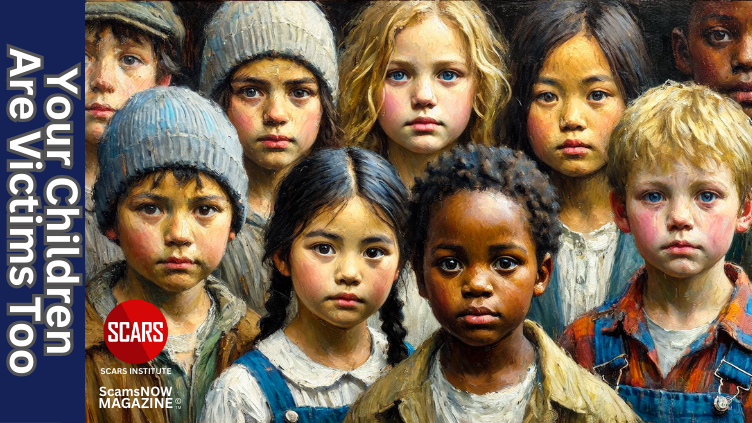

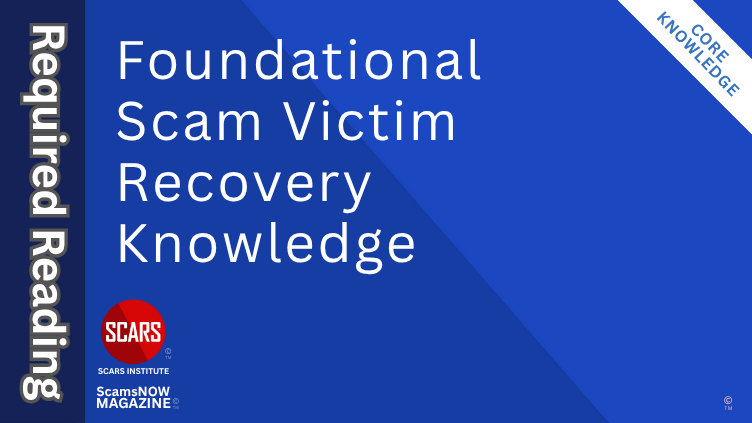



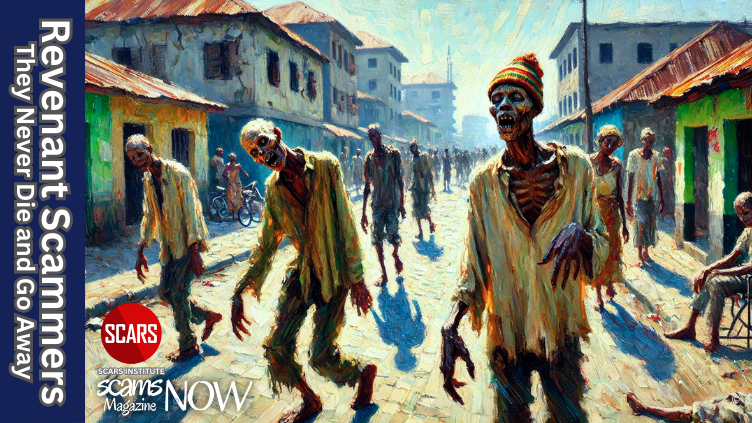
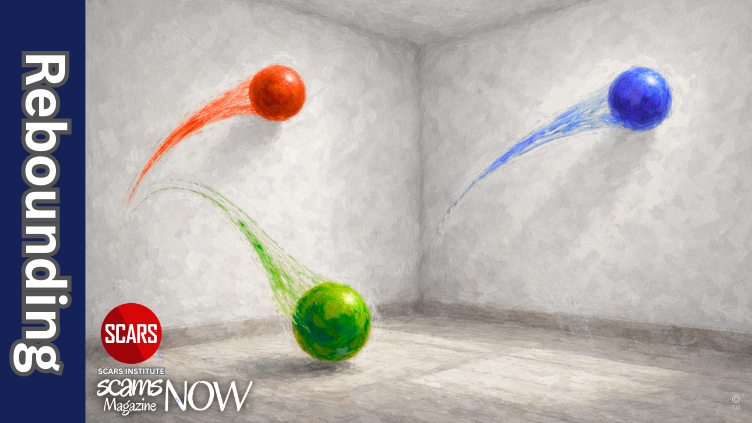


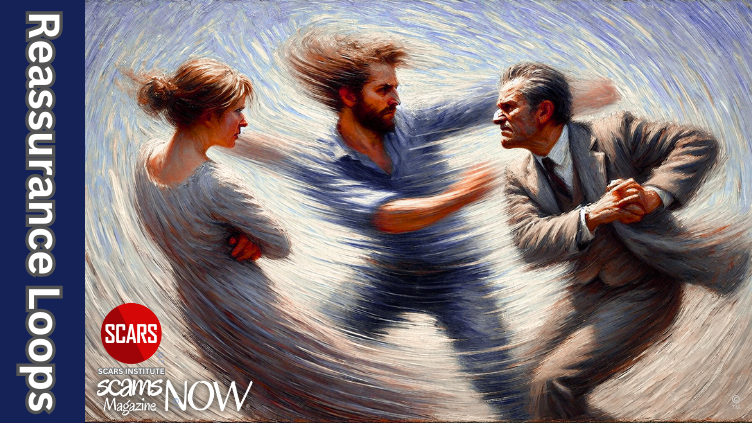


![NavyLogo@4x-81[1] The Profound Sadness That Comes with Physiological Trauma - 2025](https://scamsnow.com/wp-content/uploads/2025/04/NavyLogo@4x-811.png)

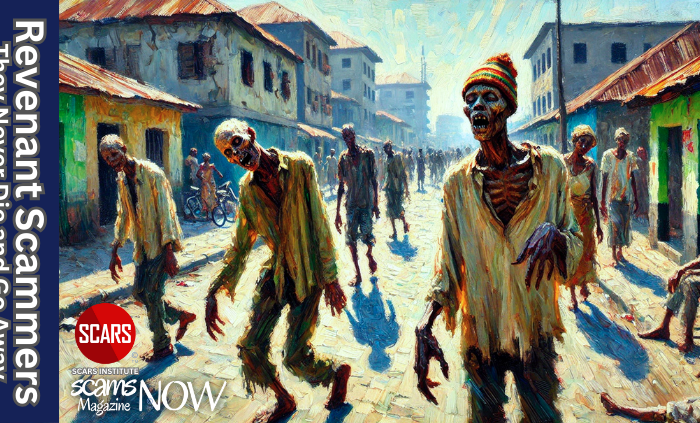
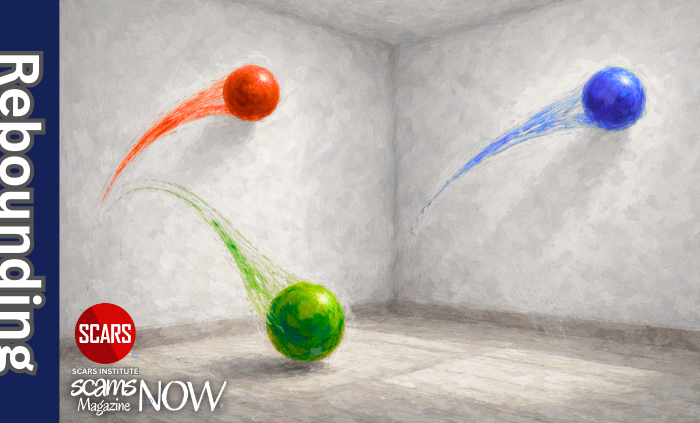

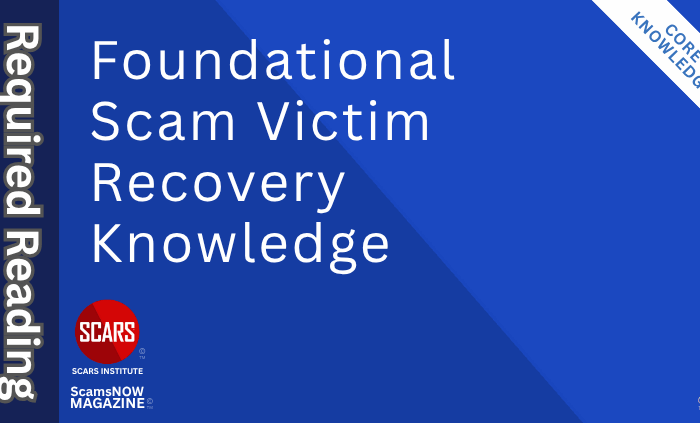




![scars-institute[1] The Profound Sadness That Comes with Physiological Trauma - 2025](https://scamsnow.com/wp-content/uploads/2025/04/scars-institute1.png)

![niprc1.png1_-150×1501-1[1] The Profound Sadness That Comes with Physiological Trauma - 2025](https://scamsnow.com/wp-content/uploads/2025/04/niprc1.png1_-150x1501-11.webp)

This is me! I wish I had come across the article sooner. So much of what I am and how I handle my emotions and the world is described here.